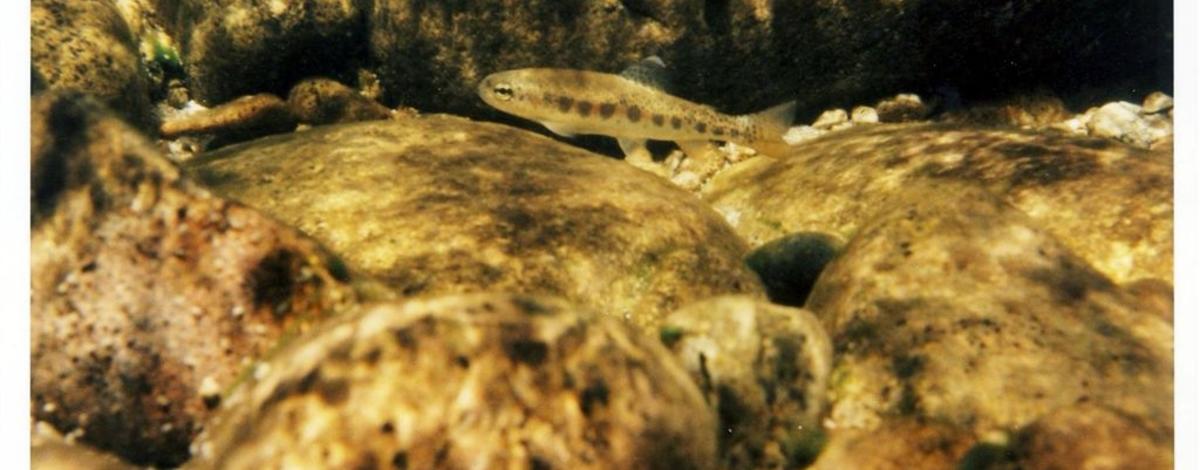Biologists working with young salmon and trout often refer to them as parr. Where does this word come from and what does it mean? How does this relate to smolt, another funny word I wrote about before.
When we view a young trout or salmon from the side, a series of dark vertical markings are visible. These are called “parr marks” which comes from the Old English word parren meaning “to enclose”. It makes sense if you think of the shadows cast by the vertical bars of a fence. All young salmon, trout and their close relatives have regularly spaced dark marks on their sides. That is why we call them parr. Parr are also often called fingerlings. They are about as long as your fingers.
There are many species of salmon and trout in Idaho, but their young all have parr marks of some kind. It is a form of camouflage, which serves to break up the outline of the young fish so that it blends in more easily into the gravel and shadows in a stream. At this stage of their life, the young fish are actively feeding up in the water and need a disguise from predators. The parr marks help avoid predators that are in the water. The speckles on their back have a similar function against predators from above.
Parr marks fade as the fish grow. When salmon head to the seas they become silvery because they don’t need stream camo any more. Larger trout also don’t need the side camo as much, so it fades.
The exact pattern of parr marks differs by species. This helps biologists identify them, especially when conducting snorkel surveys in streams. Snorkel surveys are often called “parr surveys” because parr are the main focus of the counts. Counting parr is important to tell us how if adults spawning were successful in the prior year. Many parr in the river can signal more adult fish in the coming years. We also learn which species and size of fish are found in the different parts of Idaho’s streams, from small headwater streams to large rivers. It really helps for Fish and Game biologists to know their parr!

